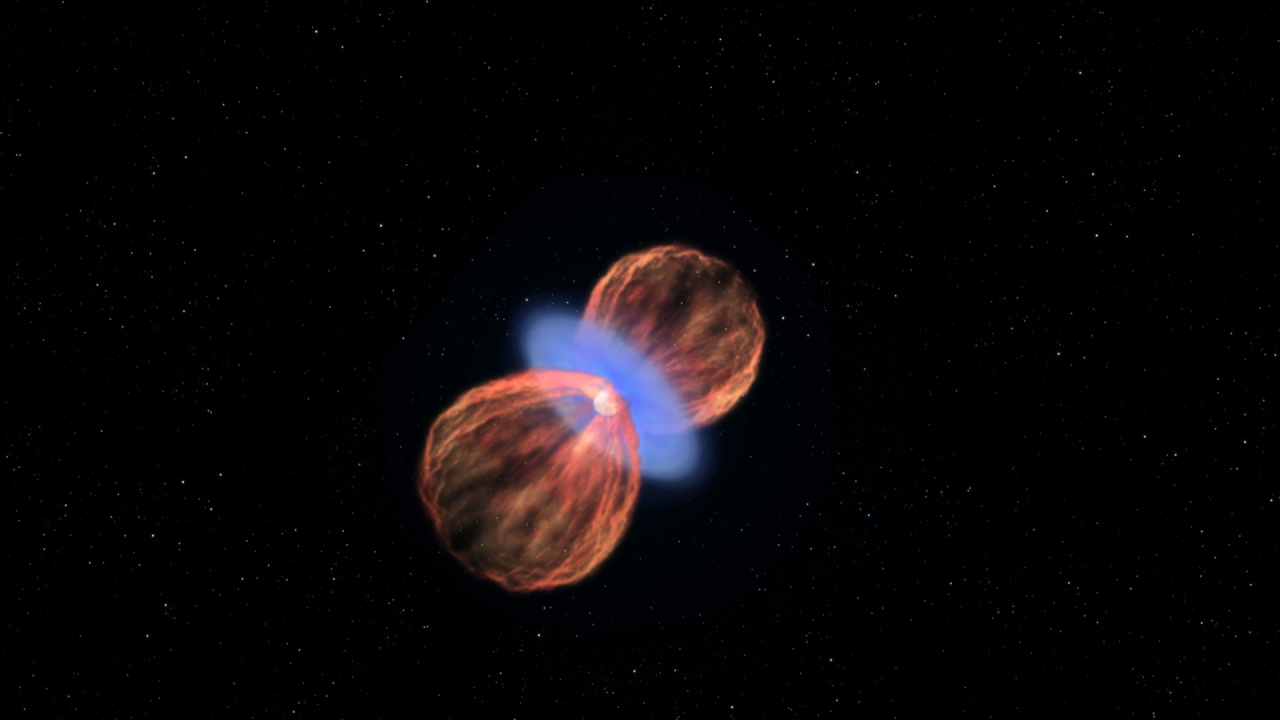1 min read
Scenario for Eta Carinae Outburst

This six-panel graphic illustrates a possible scenario for the powerful blast seen 170 years ago from the star system Eta Carinae.
1. Eta Carinae initially was a triple-star system. Two hefty stars (A and B) in the system are orbiting closely and a third companion C is orbiting much farther away.
2. When the most massive of the close binary stars (A) nears the end of its life, it begins to expand and dumps most of its material onto its slightly smaller sibling (B).
3. The sibling (B) bulks up to about 100 solar masses and becomes extremely bright. The donor star (A) has been stripped of its hydrogen layers, exposing its hot helium core. The mass transfer alters the gravitational balance of the system, and the helium-core star moves farther away from its monster sibling.
4. The helium-core star then interacts gravitationally with the outermost star (C), pulling it into the fray. The two stars trade places, and the outermost star gets kicked inward.
5. Star C, moving inward, interacts with the extremely massive sibling, creating a disk of material around the giant star.
6. Eventually, star C merges with the hefty star, producing an explosive event that forms bipolar lobes of material ejected from the monster sibling. Meanwhile, the surviving companion, A, settles into an elongated orbit around the merged pair. Every 5.5 years it passes through the giant star’s outer gaseous envelope, producing shock waves that are detected in X-rays.
- Release DateAugust 2, 2018
- Science ReleaseAstronomers Uncover New Clues to the Star that Wouldn’t Die
- Credit
Related Images & Videos

Animation Showing Scenario for Eta Carinae Outburst
This animation shows how the massive star Eta Carinae survived a major eruption in the 1840s. In this scenario, Eta Carinae initially began as a triple-star system. Two hefty stars in the system are orbiting closely and a third companion is orbiting much farther away. When the...
Share
Details
Claire Andreoli
NASA’s Goddard Space Flight Center
Greenbelt, Maryland
claire.andreoli@nasa.gov






























